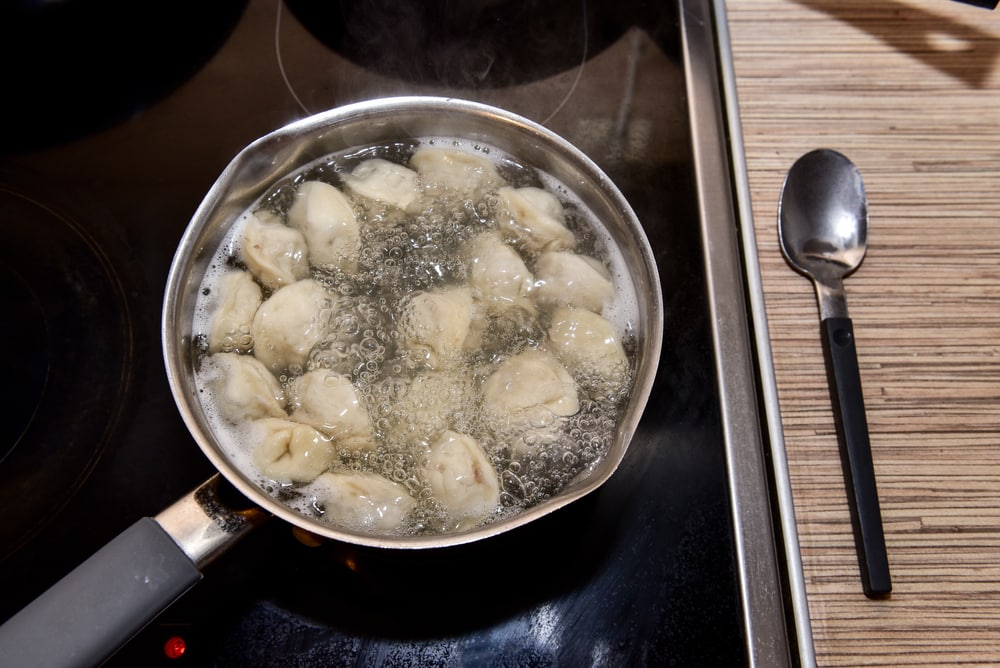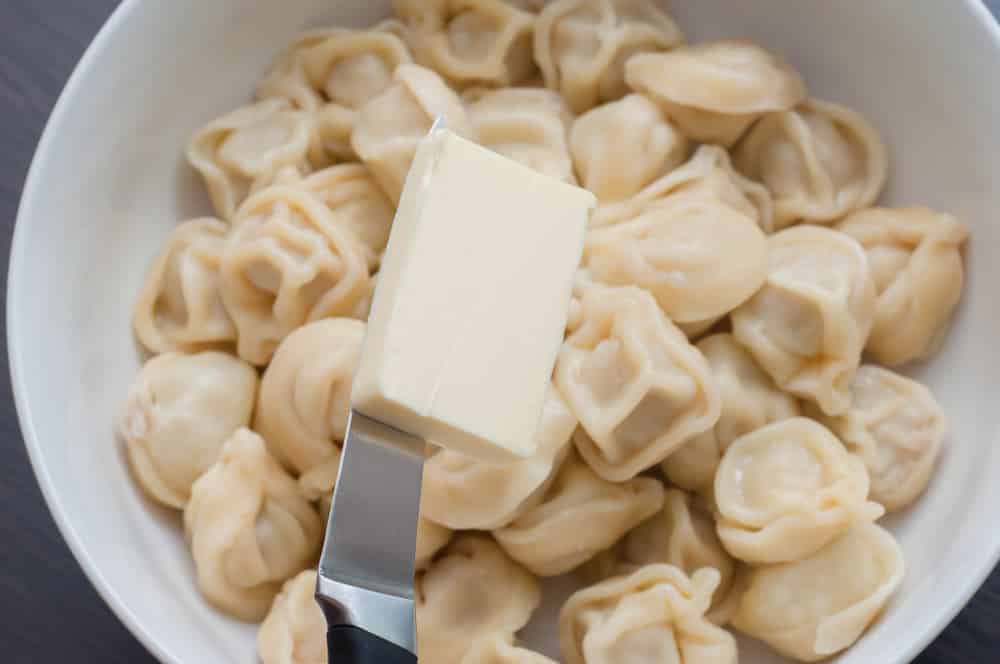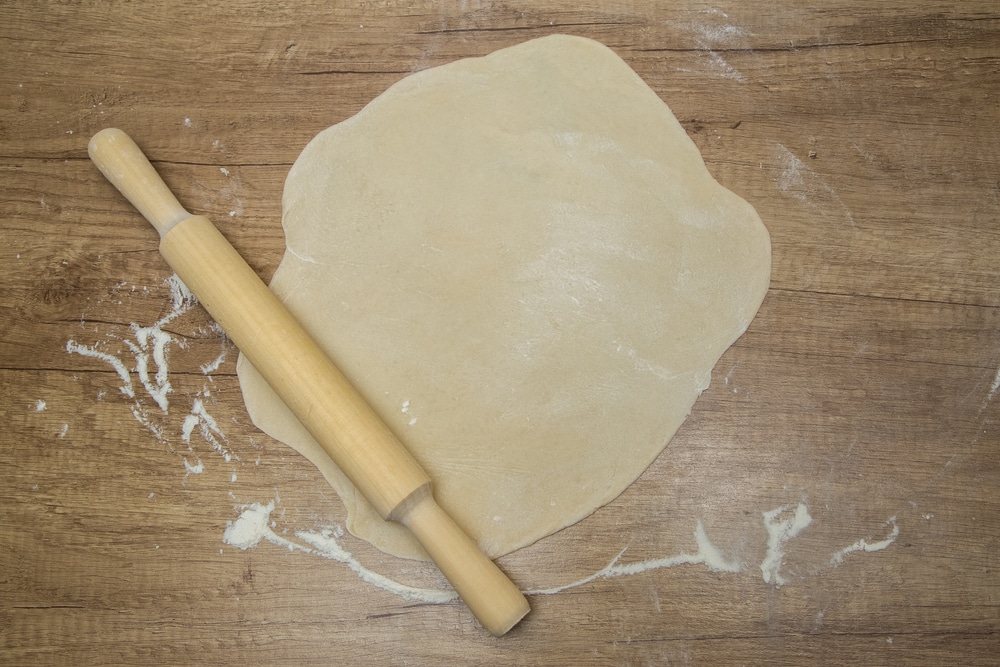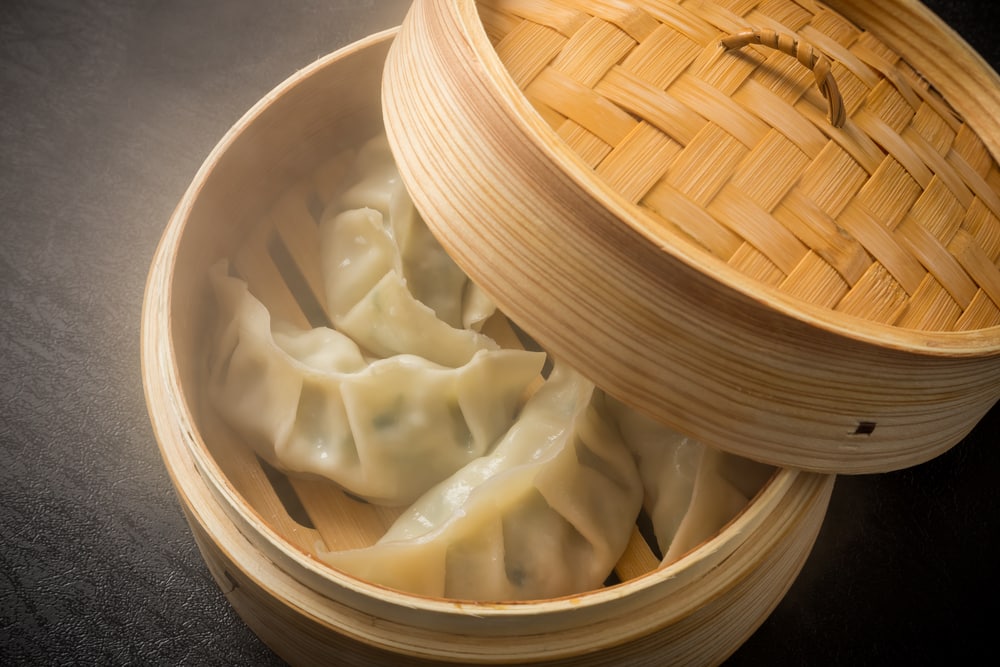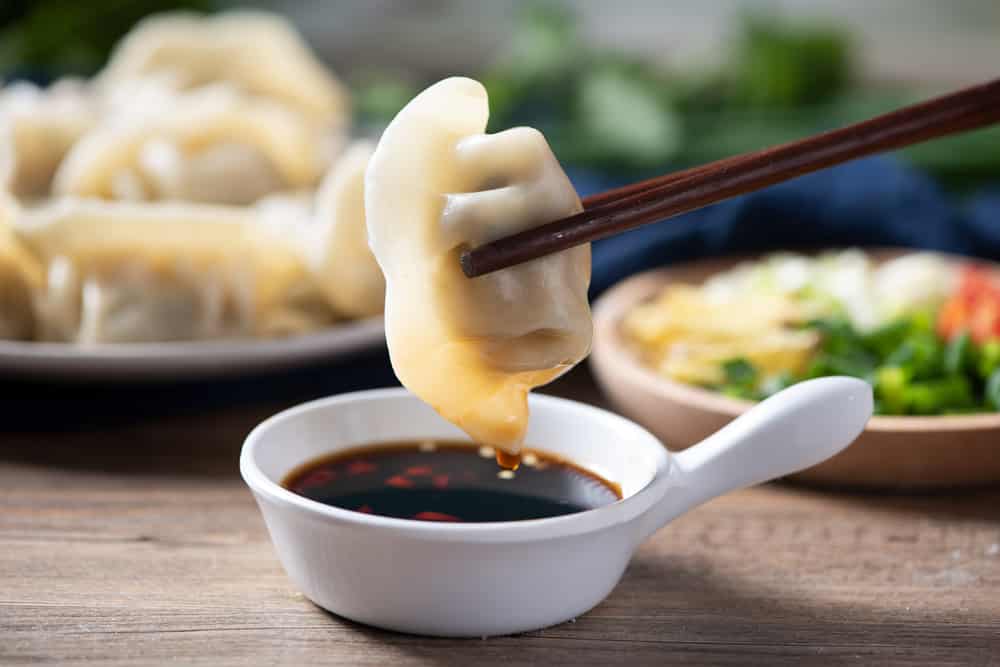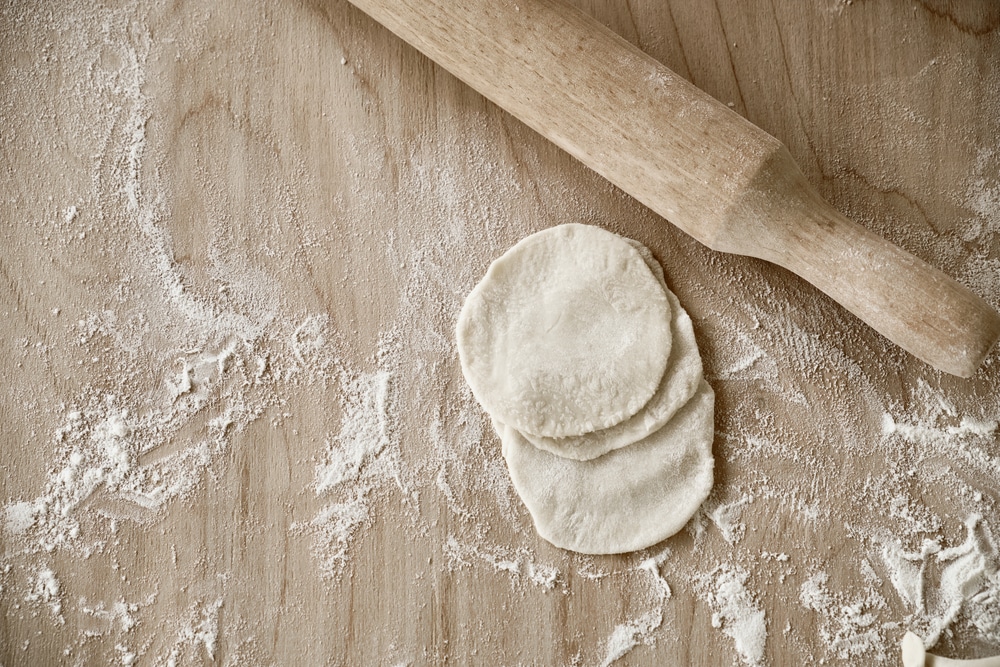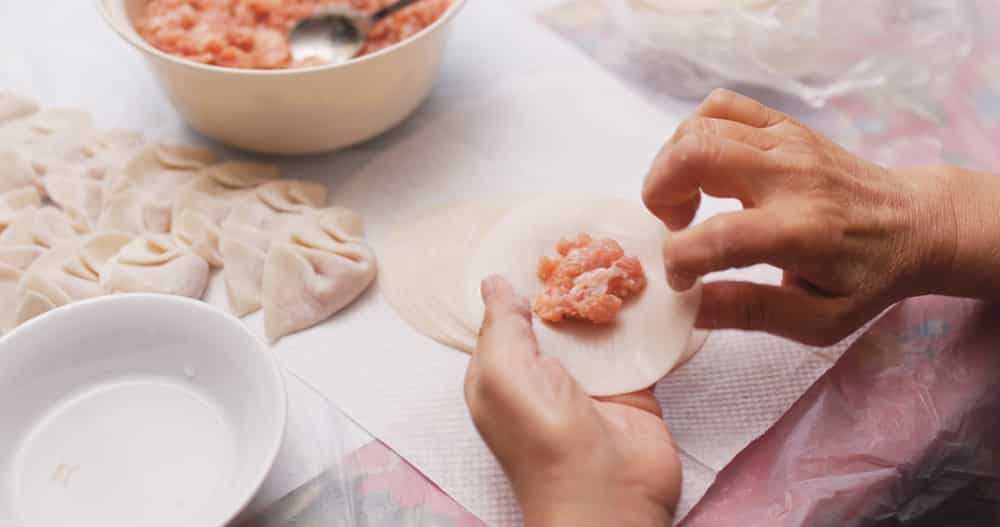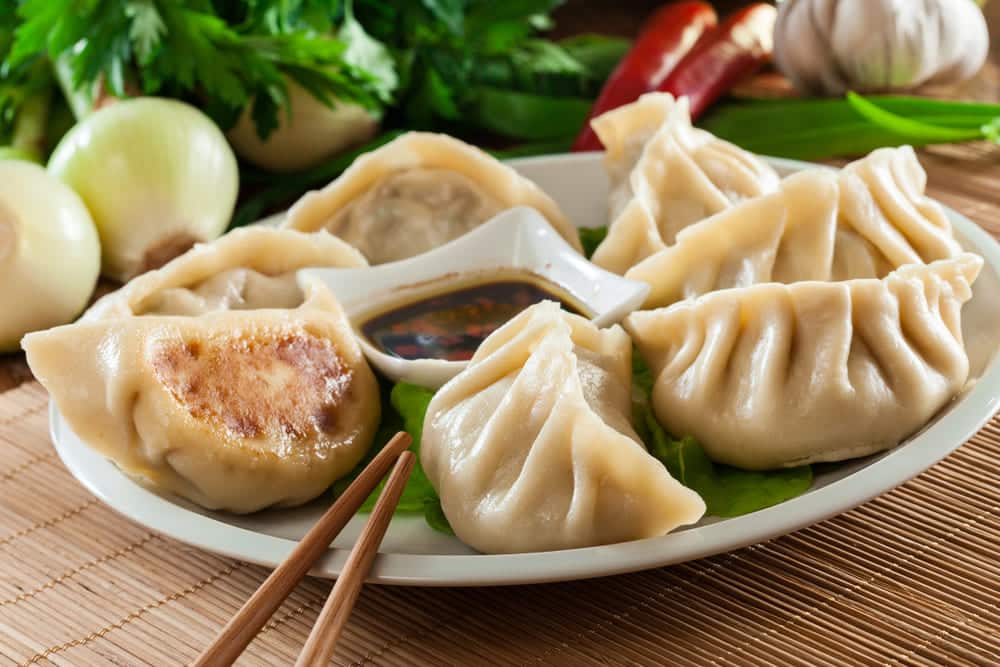
Dumplings are a comforting and filling addition to stews and soups when the temperatures drop and it’s icy outside. Don’t be put off making them by the fear of them turning out heavy, doughy, or stodgy.
Follow our tips and trouble-shooter for light, tasty dumplings that your whole family will ask for over and over again. They just take a few simple ingredients and three easy steps.
What Are Dumplings Made Of?
Most dumpling recipes call for a starch base such as flour or potatoes, a raising agent such as baking powder, salt for flavor, and some form of shortening such as butter.
The ingredients are mixed into a dough, rolled into small balls, and cooked in the broth or gravy on top of the soup or stew. For the texture to not be doughy, conditions need to be right throughout the process.
There needs to be the correct ratio of ingredients (pick a good recipe – see ours below), enough raising agent, and a correct cooking temperature.
Why Are My Dumplings Doughy?
1. Watch Your Heat Settings
The stew or soup you drop the dumplings into should be simmering gently and not bubbling too fast on high heat. However, it must be at the boiling point because if it is too cool the dumplings will not cook.
The right temperature will ensure that the dumplings have time to rise and cook all the way through, becoming fluffy and light as they do so.
2. Check The Fat Quantities
Be careful that your recipe does not call for large amounts of fat. A little butter or lard is needed for a good texture but too much will inhibit rising.
We find that liquid oils are not the best if you want soft, fluffy dumplings. Choose butter for the best results every time.
3. Overmixing of the batter
Overmixing the dough will give you tough, doughy results. Do not knead it as for bread. In fact, your dumpling batter should be runny enough to be dropped from a spoon into the stew. It should not form hard balls of dough.
So, ensure that your recipe has enough liquid (usually milk) in it. Make a soft, still lumpy batter, and do not overmix. We recommend mixing by hand instead of using a food processor to prevent overbeating.
4. Beware of steaming throughout
The best way to ensure perfectly risen dumplings with a good texture is to begin the cooking process with the lid off.
Cook them uncovered for the first 10 minutes then put the lid on and finish cooking them for another 10 minutes. Both processes are important for good rising.
5. Don’t Overcook Them
Overcooking can make the dumpling tough and chewy, so cook them just until they are risen and puffy, then serve straight away.
6. Ensure Maximum Rising
Make sure that you use the right amount of baking powder and that it is fresh. Each one must have enough space to expand in the pot so don’t overcrowd them.
Drop them in with spaces in between, placing them on top of the meat and vegetables so that they won’t sink to the bottom. It is important to cover them for the last 10 minutes of cooking so that they can steam and expand.
7. Filling Matters
Be careful what extra ingredients you add to the batter. For instance, while cheese is tasty, it increases the overall fat content and may lead to heavy dumplings.
Our No-Fail Dumpling Recipe
- 1 cup cake flour
- 2 teaspoons baking powder
- Big pinch of salt
- 1 tablespoon soft butter
- ½ cup buttermilk or plain yogurt
- 1 tablespoon snipped chives
- Cooked stew in the pot, at simmering temperature.
Using a mixing bowl, combine the dry ingredients. Add the chives and butter. Use your fingers to crumble the butter in.
Stir in enough buttermilk or yogurt to make a soft, thick dough that is runny enough to be dropped from a spoon.
Don’t worry if it is a little lumpy. Drop dessertspoonfuls onto the top of the stew, leaving spaces between them to allow for rising. Cook, uncovered for 10 minutes.
Put the lid on and cook for a further 10 minutes until the dumplings have risen and are puffed up. Serve immediately with the stew.
Related video:
